LOS ANGELES — Greenlane Infrastructure, a joint venture between Daimler Truck North America (DTNA), NextEra Energy Resources and BlackRock, is planning its first commercial electric vehicle charging corridor with more than 100 chargers that will stretch along Interstate 15 from Los Angeles to Las Vegas.
Greenlane said in a news release that “as the demand for efficient, reliable electric vehicle charging and hydrogen refueling infrastructure grows along the nation’s freight corridors,” its plan for a charging corridor will increase driver comfort, improve the resilience for high uptime and, ultimately, move freight more efficiently.
The new charging corridor aims to accelerate the roll out of carbon-neutral freight transportation with initial charging locations in Colton, Barstow and Baker, California, according to Greenlane.
Over the next year, further locations will be added along the corridor, extending beyond Southern Nevada and to San Pedro in California.
“After considering various factors, such as truck telematics data, frequent freight routes and customer deployment strategy, the Greenlane team selected these three optimal locations for our first commercial charging corridor to accelerate the transition to zero emissions,” said Patrick Macdonald-King, CEO of Greenlane. “The launch of this corridor not only marks a critical step in addressing the urgent need for publicly available, nationwide electric charging for commercial vehicles but will also serve as a model for the EV charging hubs of the future.”
At full build, the Colton site is planned to have more than 60 chargers, including 400 kW Direct Current Fast Chargers (DCFC) to speed charging of medium- and heavy-duty zero-emission vehicles (ZEVs). More 200 kW DCFC charging options onsite will enable long-duration and overnight charging for heavy-duty tractors, medium-duty ZEVs and school buses.
Greenlane will also deploy multiple passenger car charging stalls to support light-duty and passenger vehicles.
Later project phases will support both long-duration and overnight charging lanes for tractor-trailer combinations.
The Greenlane site in Colton will also be future-proofed to accommodate the Megawatt Charging System when commercially available.
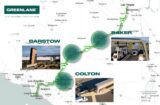
“By using a predictive modeling tool to simulate truck traffic and energy flow at the site, we can determine how many chargers are necessary to meet the regional demand based on vehicle characteristics and departure and arrival times for vehicles hauling freight along this corridor,” said Macdonald-King. “Our findings indicated that placing the three stations approximately 60 to 90 miles apart would maximize uptime for day-cab drivers by enabling shorter charging sessions at each stop and ultimately allowing customers to move freight confidently without any limitations.”
Designed to upgrade and enhance the current rest stop experience, each Greenlane site will have wide pull-through lanes, allowing drivers to enter and exit the property quickly and easily. While waiting for vehicles to charge, drivers can access modern facilities, with restrooms and other amenities, including food and beverage options.
Greenlane officials say their aim is to develop a nationwide network of commercial charging infrastructure locations across the U.S. The charging sites will also serve battery-electric passenger car and light-duty fleet customers and are designed to provide hydrogen refueling for commercial vehicles in the coming years.
Greenlane is targeting a spring groundbreaking on the Colton flagship site, aiming to open in late 2024.
Located at the intersection of Interstates 10 and 215, the Colton hub will offer multiple ways for heavy-medium-and light-duty zero emission drivers to charge their vehicles.
Born in Pine Bluff, Arkansas, and raised in East Texas, John Worthen returned to his home state to attend college in 1998 and decided to make his life in The Natural State. Worthen is a 20-year veteran of the journalism industry and has covered just about every topic there is. He has a passion for writing and telling stories. He has worked as a beat reporter and bureau chief for a statewide newspaper and as managing editor of a regional newspaper in Arkansas. Additionally, Worthen has been a prolific freelance journalist for two decades, and has been published in several travel magazines and on travel websites.

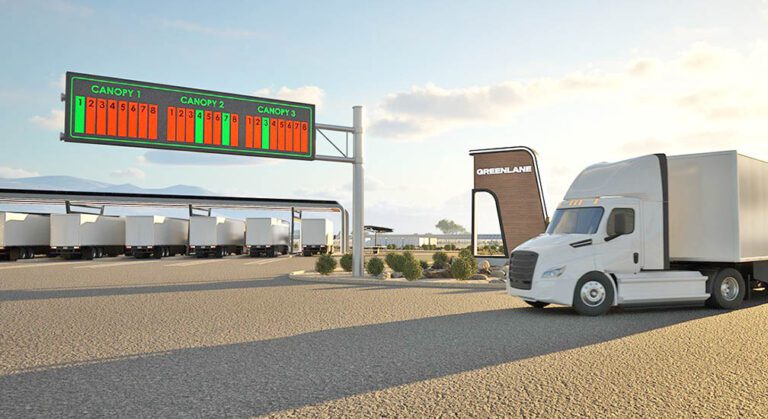

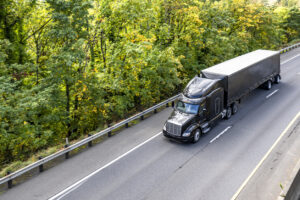


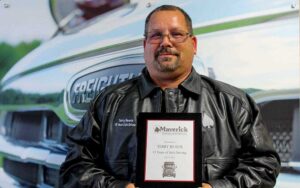

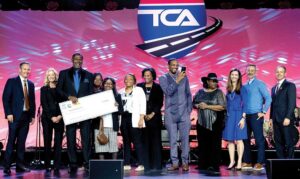
How much will it cost to fully charge a behemoth of a truck? I d dare say from $300.00 to 500.00 (I hope) but probably close to $1,000.00 it is California,and Black Rock that corporation doesn t do things non profit or bc they are good.
And how is California going to generate the HUGE amount of electricity to charge all of these trucks,last time I checked the prospect of rolling black outs was still a possibility,advice such as “Don t charge your EV today so that we don t put extra strain on our electricity generating plants” was playing on t.v. and the web.
I just can t get thru my head that a zombie in the WH who can t even put a sentence together is the one pushing for this shit…and dumb people go along with it.